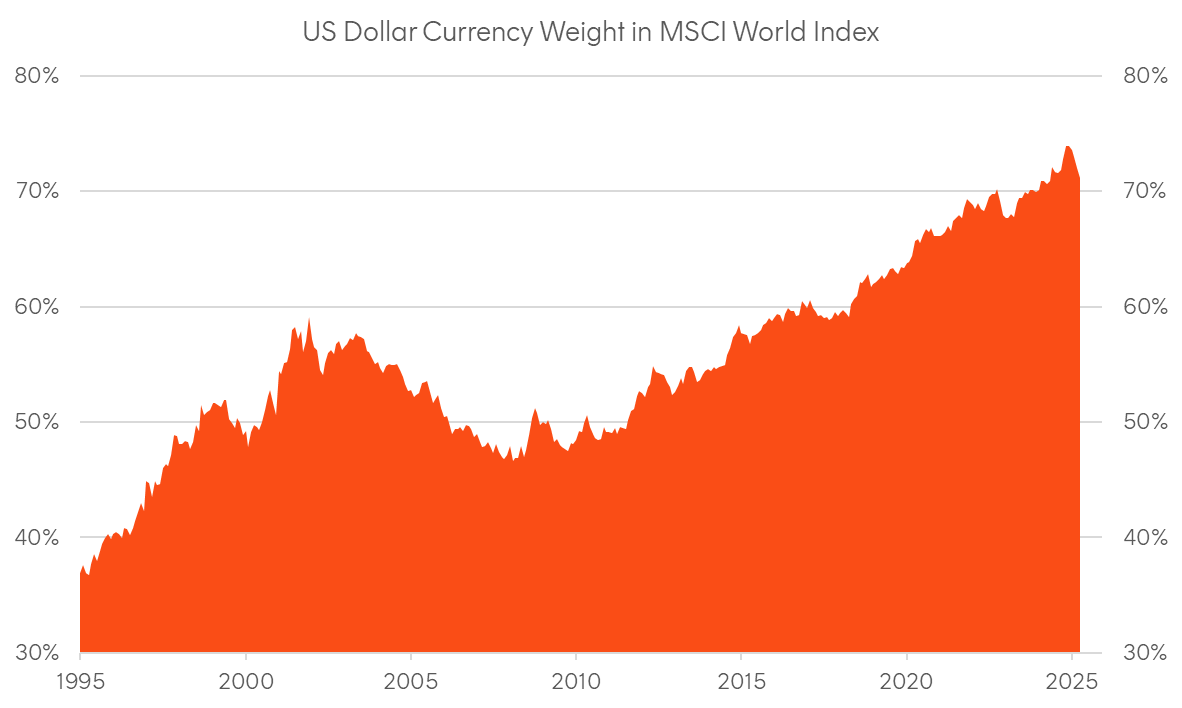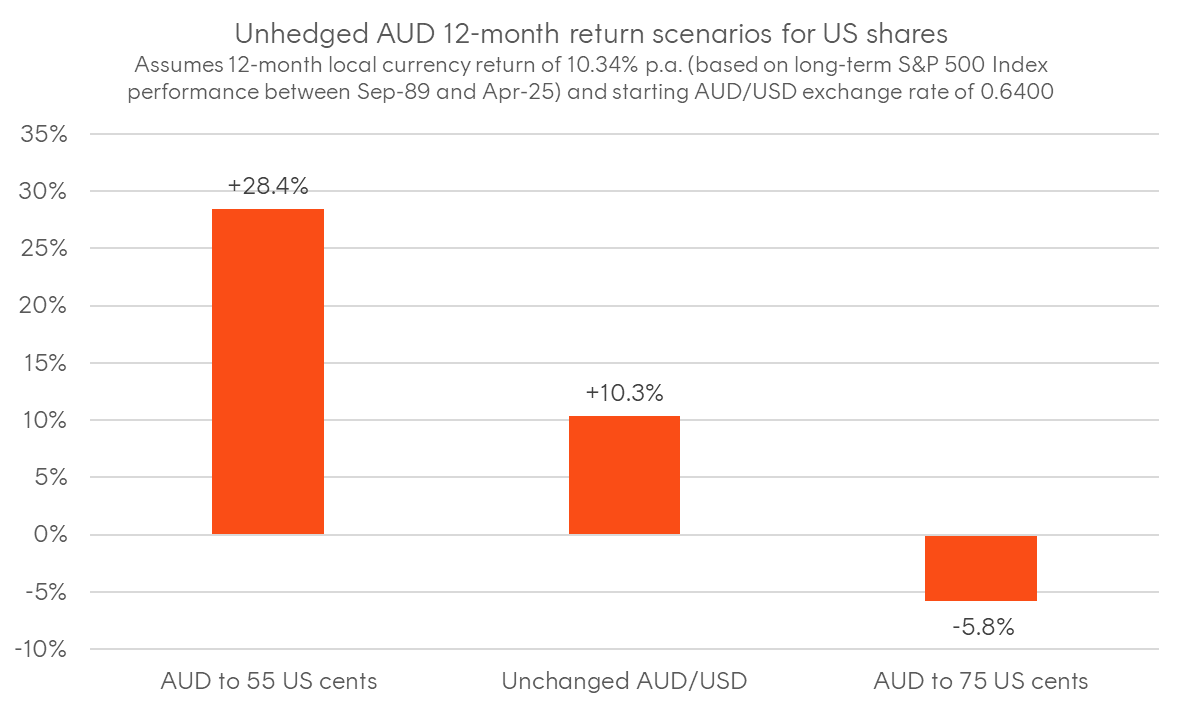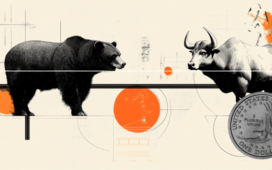The Aussie dollar has recently been appreciating against the US dollar. And, for anyone with money in overseas investments, that’s something you’ll want to pay attention to.
From 8 April to 12 May 2025, the Australian dollar rallied nearly 8%. Conversely, the US Dollar Index has fallen more than 7% so far in 2025 (as at 12 May 2025) and is now at lows not seen since July 20231.
What might seem like just another economic statistic is actually an important move that could take a bite out of your investment returns on US stocks. Let’s look at why this shift is happening and what you can do to help protect your portfolio.
Why is the US dollar weakening?
There are lots of reasons why but here are a few:
- Investors are reacting to the White House’s new approach to trade. Aggressive tariffs have already caused a hit to US GDP and may yet have a significant impact on inflation, corporate earnings and long-term market sentiment2.
- Prior to this most recent downcycle, the US dollar was trading at a 55-year high3. Goldman Sachs4, Bank of America5 and others have all been quoted as saying that the dollar was fundamentally overvalued before this most recent drop.
- President Trump’s verbal attacks on the independence of the US Federal Reserve aren’t helping matters.
This weakening in the US dollar matters for investors with exposure to US stocks because when you convert your US investment returns into Australian dollars, you may receive less than you expect. An appreciation of a few cents in the AUD/USD exchange rate can erase more from your returns than you may realise.
This is where hedging your US equity investments can make a real difference.
What is hedging?
Hedging is an investing strategy that is intended to offset potential losses or gains made in another investment.
In the case of ETFs, it means the ETF issuer will enter forward foreign exchange contracts (or similar instruments) with a third party. These contracts are agreements between the parties to exchange currencies at a fixed rate and at a fixed future date.
This enables the ETF issues to effectively set an exchange rate at a certain price for a certain period. That way, if the value of the ETF’s international investments sees a loss attributable to currency movements, the forward contract can provide some offset (and vice versa for gains). Hedging is best suited to investors who think the AUD may appreciate, want to remove the currency variable in their portfolios or just simply want another form of diversification.
You can find out more about hedging here.
3 reasons why hedging your US equities exposure could be a good idea
Reason 1: You may be overexposed to the US dollar without realising it
Most global equities and global equity ETFs held by Australians, particularly Mum and Dad investors, are unhedged.
In addition, the weight of US equities and the US dollar on the MSCI World Index now stands at over 70%6, around the highest levels on record.

In other words, if you’re invested in unhedged global stocks, your concentration and currency risk to the US may be very high without you realising it. If the US dollar continues to weaken, the impact of these risks could negatively impact your portfolio.
Hedging is a way to mitigate currency risk.
Reason 2: The Australian dollar’s strength can weigh heavily on returns on unhedged US stocks
Over the past decade, being unhedged has provided a tailwind. However, this dynamic can reverse with serious consequences for unaware investors.
The following chart illustrates the impact of exchange rate changes on (unhedged) Australian dollar returns for a hypothetical US shares investment (assuming a US equity market return equivalent to the long-term average of 10.3%).
For example, if the Australian dollar were to rise from 64 cents to 75 cents against the US dollar, an Australian investor would see their US investment return of 10.3% become a 5.8% loss due to the currency movements. Conversely, if the Australian dollar were to fall from 64 cents to 55 cents against the US dollar, the Australian investor would see their return (of 10.3%) increase to 28.4%.

Reason 3: Shifts in currency cycles can last years
History also shows that currency cycles can last a long time. Declines of 30% or more in the broad US dollar index7 are not unusual. Historically, US dollar trend cycles have lasted around six to seven years (since 1975). This means that the early downtrend we’ve seen in the US dollar could become a longer-term story.
Other factors to consider
While currency cycles can last a long time, currency movements can be volatile and are notoriously difficult to predict.
Another point to consider is that hedged ETFs generally cost more than their unhedged counterparts, which may matter if lower costs are important to you.
Find out more about hedging
For those looking to protect their portfolio from currency impacts through hedging, you can explore the ETF options we offer at betashares.com.au.
But whatever you do, don’t discount the power of hedging. With a little bit of research, a diversified strategy and some basic understanding of the currency markets, it’s the extra step you can take that may help shield your portfolio from the impact of currency movements.
Never miss an update
Stay up to date with my current content by
following me below and you’ll be notified every time I post a wire





